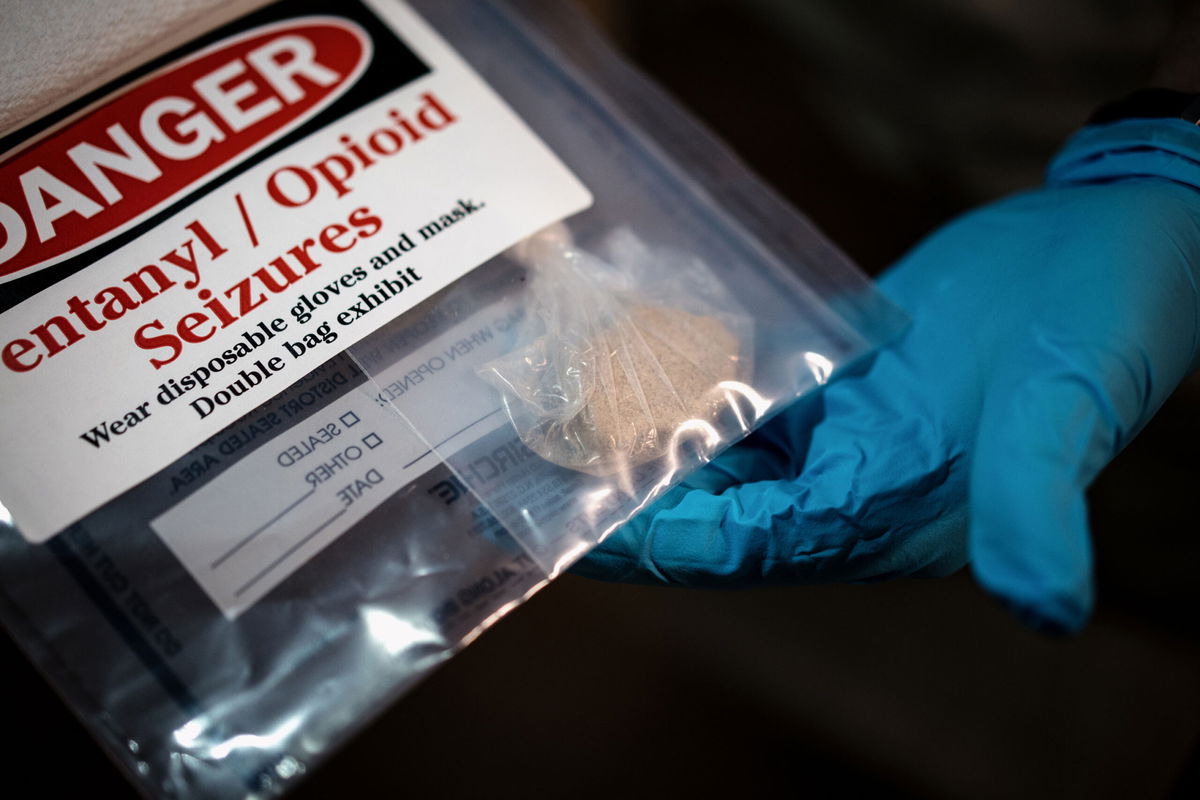COVID-19 is no longer a public health emergency, but others remain

This image shows an evidence bag containing seized heroin at the Volusia County Sheriff's Office Evidence Facility in Daytona Beach
By Deidre McPhillips, CNN
The COVID-19 pandemic hit a major milestone this month as public health emergency declarations were ended by both the United States government and the World Health Organization. Emergency declarations for mpox also recently ended.
This doesn’t mean COVID-19 and mpox are no longer of concern, but it does mark the end of the availability of certain logistical capabilities to manage them.
Still, other critical health challenges were identified as health emergencies years before the start of the COVID-19 pandemic and continue to be so: the opioid crisis in the US and the global spread of poliovirus.
What is a public health emergency?
Some public health concerns can be serious health threats without a formal emergency declaration, said Dr. Tom Frieden, former director of the US Centers for Disease Control and Prevention.
It largely boils down to the logistics of government operations.
“When there’s an unusual situation that requires multiple parts of an agency or multiple parts of the government or multiple parts of society to come together and coordinate, collaborate and work efficiently, then an emergency declaration can be a useful tool,” said Frieden, president and CEO of Resolve to Save Lives, an organization focused on global epidemic prevention and cardiovascular health.
“Sometimes, an emergency is declared to make the point that it’s a big problem, to get people’s attention. Sometimes, an emergency is declared to get things done because that’s the only way you can bring certain governmental capacities to bear.”
According to WHO, a public health emergency of international concern is “an extraordinary event” that poses public health risk through the international spread of disease.
It creates an agreement between countries to abide by WHO’s recommendations for managing the emergency, often requiring a “coordinated international response.” Each country, in turn, declares its own public health emergency — declarations that carry legal weight. Countries use them to marshal resources and waive rules in order to ease a crisis.
In the US, the secretary of the Department of Health and Human Services can declare a public health emergency for diseases or disorders that pose a threat, including “significant outbreaks” of an infectious disease, bioterrorist attacks or otherwise.
This triggers the availability of a set of resources and actions for the federal government, such as additional funds and data and reporting requirements.
Emergency declarations typically last up to 90 days, with formal renewal required as necessary every three months after that.
Opioid crisis in the US
The opioid crisis was determined to be a public health emergency in October 2017, during the Trump administration, driven by the rising rates of opioid-related deaths and opioid use disorder.
The declaration has been renewed for more than five years, most recently at the end of March.
According to the CDC, the opioid epidemic started in 1999 with a rise in prescription opioid overdose deaths. Deaths started to increase precipitously as synthetic opioids — particularly fentanyl — started to take over in 2013.
In 2021, overdose deaths reached record levels in the US, and about three-quarters — more than 80,000 deaths — involved opioids.
Within the first year of the opioid emergency declaration, HHS used expanded authorities to field a survey about treatment for opioid use disorder among providers and to expedite research on the topic.
Public health emergencies are also declared to help with recovery after natural disasters, most recently for severe storms that hit Mississippi in March.
However, the Government Accountability Office considers both federal management of the public health emergency system and efforts to combat drug misuse to be “high-risk” areas that are vulnerable or in need of broad reform.
In a recent report, the federal watchdog group said that it has found “persistent deficiencies in HHS’s leadership role preparing for and responding to public health emergencies” and no demonstrated progress in federal agencies’ actions to address drug misuse.
Global spread of polio
WHO has considered poliovirus a public health emergency of international concern since 2014.
A committee formed to address the emergency reviewed the most recent data on cases and spread this month and voted unanimously that ongoing risks merited an extension of the emergency declaration, which the director-general formalized Friday.
The committee was “encouraged by reported progress” but says that risks remain high for factors including weak vaccination rates that could have been affected by the COVID-19 pandemic.
WHO identified seven counties with potential risk for international spread. And the US is among a group of 37 countries with recently detected cases.
In July, a polio case identified in New York became the first in the US in nearly a decade. The identified case, along with several positive wastewater tests in nearby communities, met WHO criteria to consider the US a country with circulating poliovirus.
Experts warned that it could just be the “tip of the iceberg,” with hundreds of cases spreading silently.
Childhood vaccination rates in the US dropped during the COVID-19 pandemic. A CDC report found that about 93% of kindergarteners enrolled in the 2021-22 school year got the required vaccines, including measles, mumps and rubella (MMR); diphtheria, tetanus and acellular pertussis (DTaP); and polio. Coverage fell for the second year in a row amid the pandemic, from about 94% the previous year and below the federal target of 95%.
Lessons from COVID-19
While no longer under a formal emergency declaration, COVID-19 continues to be part of the “landscape of health threats,” Frieden said.
But the efficiency and coordination that the formal declaration helps facilitate should always be the goal.
“I think there are really important lessons from COVID, including the need to have a much more resilient public health system so that we can find problems quickly and implement effective solutions quickly,” Frieden said.
The-CNN-Wire
™ & © 2023 Cable News Network, Inc., a Warner Bros. Discovery Company. All rights reserved.